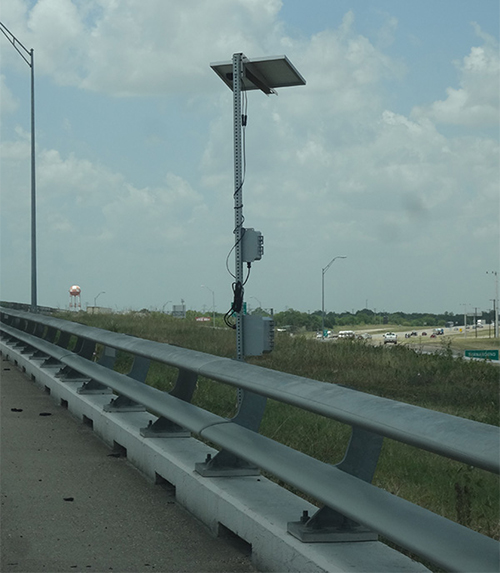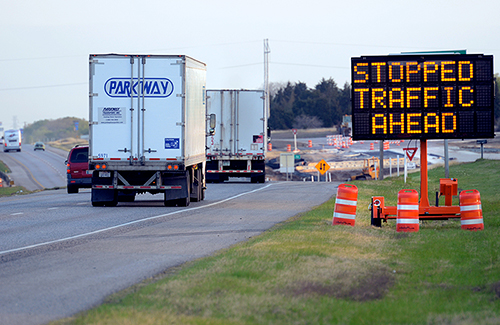As you know, I-35 Waco Project 4B is already under way for McLennan County. The project involves widening the mainlanes to four lanes in both directions and improving frontage roads and interchanges along N. Loop 340. For those traveling this stretch of I-35, that means navigating construction work zones. To keep everyone safe, make sure you pay attention to safety messages generated by the new end-of-queue warning system along I-35 from N. Loop 340 to S. Loop 340.
The system uses sensors (spaced out every half mile in either direction) to take readings of roadway speeds every minute. The sensors detect vehicles slowing down considerably — or coming to a complete stop — and alert electronic signs to then display a brief message to incoming drivers notifying them about possible traffic backups related to upcoming construction work zones.
"Once a threshold is passed for slowing or stopped traffic, portable changeable message signs (PCMSs) located at various points along the roadway will display a message, such as 'STOPPED TRAFFIC 2 MILES,'" explains Bob Brydia, senior research scientist at the Texas A&M Transportation Institute (TTI). "This alert provides a heightened awareness of current road conditions and ahead of time so that a driver is not caught unaware. There are four PCMSs in each direction along I-35 through Waco."

For drivers passing through, the end-of-queue warning system is a critical resource when they encounter lane closures on their route. In the end-of-queue warning system's deployments, there were fewer crashes at night, rear-end collisions and severe crashes. The savings of societal crash costs (by using the end-of-queue warning system) is estimated at more than one million dollars. It can keep travelers safe as they navigate I-35 in Waco and helps construction workers focus on their work.
The current application of the end-of-queue warning system was adapted for use in Texas several years ago by Brydia and other TTI researchers. Over the past decade, TTI has teamed up with the Texas Department of Transportation (TxDOT) to set up various channels to communicate with drivers during the construction work on I-35. These communication channels included end-of-queue warning systems, Bluetooth® readers and Wavetronix sensors installed at points along I-35. These technologies help TTI and TxDOT produce reliable traffic forecasts and construction incident updates for the traveling public.

"The system is there to provide an increased awareness of the types of slowdowns and rapid traffic changes that can occur in construction areas," notes Brydia. "The messages a driver will see are based on traffic sensor readings from just a few minutes before and just a short distance in front of them. While conditions can change, having an awareness of slowing or stopped traffic can help save lives and help #EndTheStreakTX of fatalities on our roadways! As always, TxDOT asks drivers to obey all signs in the construction area and be aware of changing conditions."
Jake Smith
I-35 Public Information Officer
254-867-2705
Contact My35